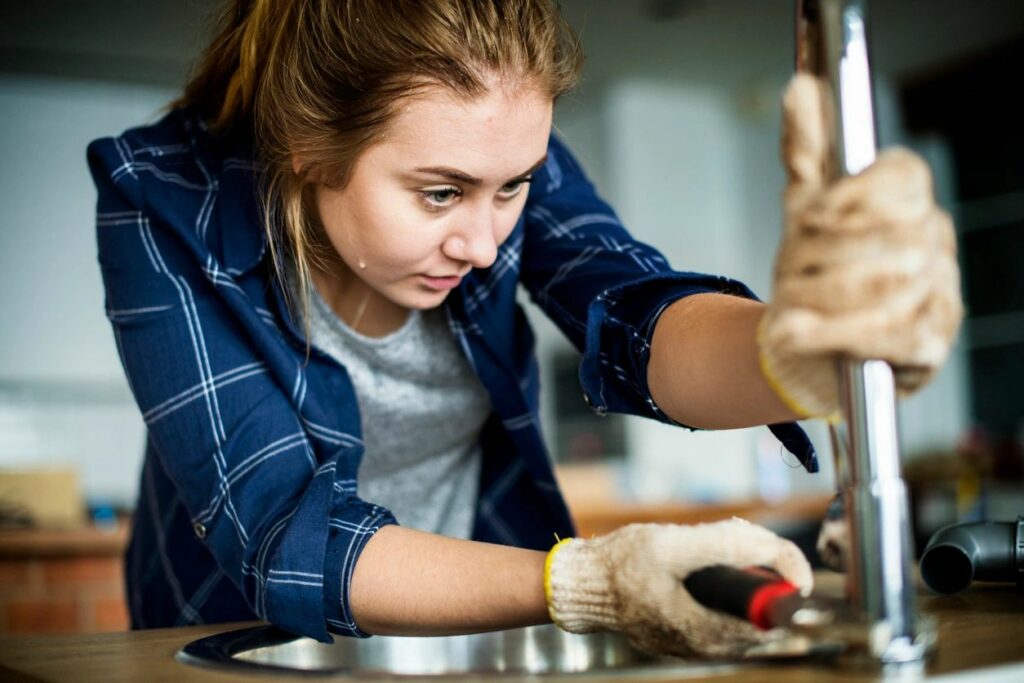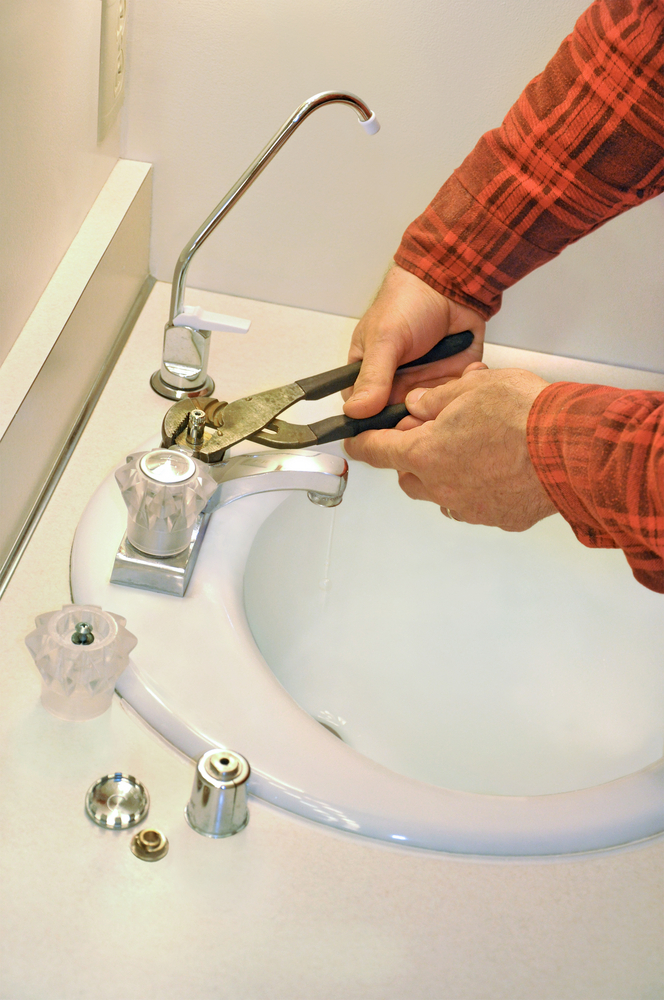We've come across this post involving Leaky Faucets: Why They Happen & What to Do About Them down the page on the web and accepted it made sense to talk about it with you here.

Dripping taps may appear like a small aggravation, however their impact exceeds just the nuisance of the sound. From drainage to incurring unnecessary economic prices and health threats, ignoring a trickling faucet can cause different effects. In this article, we'll look into why it's critical to address this common household concern without delay and efficiently.
Wastage of Water
Environmental Influence
Dripping faucets add substantially to water wastage. According to the Environmental Protection Agency (EPA), a single faucet trickling at one drip per secondly can waste greater than 3,000 gallons of water each year. This not just strains water sources but likewise influences ecosystems and wild animals depending on them.
Step-by-Step Overview to Repairing a Dripping Tap
Tools Called for
Prior to trying to repair a dripping tap, collect the necessary tools, including a flexible wrench, screwdrivers, replacement parts (such as washers or cartridges), and plumber's tape.
Typical Tap Issues and Their Solutions
Recognize the type of tap and the details problem creating the drip. Typical problems include worn-out washing machines, corroded shutoff seats, or faulty O-rings. Describe maker instructions or on-line tutorials for detailed advice on repair work.
Financial Expenses
Raised Water Costs
Past the ecological effect, leaking faucets can blow up water expenses considerably. The built up waste over time translates right into greater utility expenditures, which might have been avoided with prompt repair work.
Possible Home Damages
Furthermore, extended dripping can bring about damage to fixtures and surfaces bordering the tap. Water build-up can trigger staining, deterioration, and even architectural problems if left unattended, causing extra repair work costs.
Wellness Issues
Mold and Mold Development
The continuous presence of moisture from a trickling faucet produces a suitable atmosphere for mold and mildew and mold growth. These fungi not just jeopardize indoor air top quality however also present health threats, especially for people with respiratory problems or allergies.
Waterborne Diseases
Stationary water in trickling faucets can come to be a breeding ground for germs and various other virus, enhancing the danger of waterborne conditions. Impurities such as Legionella bacteria prosper in stagnant water, potentially causing significant illnesses when ingested or inhaled.
DIY vs. Professional Repair
Advantages and disadvantages of Do It Yourself Repair Work
While some may try to take care of a trickling faucet themselves, DIY repairs come with their very own collection of challenges. Without proper knowledge and devices, do it yourself attempts can intensify the concern or bring about incomplete repair work, extending the issue.
Benefits of Working With a Specialist Plumber
Employing an expert plumber guarantees that the underlying cause of the trickling tap is dealt with efficiently. Plumbing technicians have the experience and tools to diagnose and fix faucet issues successfully, conserving time and minimizing the threat of further damage.
Ecological Responsibility
Private Contribution to Preservation
Taking obligation for fixing leaking taps aligns with broader efforts towards water preservation and ecological sustainability. Every individual's activities jointly make a considerable impact on protecting precious resources.
Lasting Living Practices
By focusing on prompt repair services and embracing water-saving routines, individuals add to sustainable living practices that profit both present and future generations.
Preventive Measures
Normal Upkeep Tips
To prevent trickling taps, do routine maintenance such as cleaning up aerators, examining for leakages, and replacing damaged parts immediately. Additionally, take into consideration installing water-saving gadgets or upgrading to a lot more efficient fixtures.
Relevance of Prompt Repair Works
Resolving dripping faucets as quickly as they're noticed stops more water wastage and prospective damages, inevitably conserving both water and cash in the long run.
Effect On Property Value
Understanding of Well-Maintained Residential Property
Keeping a residential or commercial property in good condition, including attending to maintenance problems like leaking faucets, enhances its perceived value and desirability amongst prospective buyers or tenants.
Impact on Resale Worth
Qualities with well-kept plumbing fixtures, including taps, command greater resale values in the real estate market. Resolving trickling faucets can contribute to a favorable impact during home evaluations and settlements.
Conclusion
Dealing with a trickling faucet surpasses simple ease; it's a vital step toward preserving water, reducing monetary costs, and safeguarding wellness and residential or commercial property. Whether with do it yourself fixings or professional aid, taking action to deal with dripping faucets is a tiny yet impactful method to promote responsible stewardship of resources and contribute to a much healthier, a lot more sustainable future.
How to Fix a Leaky Faucet: Step-by-Step Repair Guide
A leaky faucet may seem like a simple annoyance, but if it's not fixed promptly, that leak could cost hundreds to potentially thousands. From water damage to mold, mildew, and high water bills, even a tiny leak can be catastrophic if left unattended. Damage like this can even affect the overall value of your home, so it's important to take the right approach for leaky faucet repair. You may need the help of a plumber in some cases, but we've got a few tips you can try on how to fix a leaky faucet before calling the pros.
Four Faucet Types
When you're learning how to fix a leaky faucet, the first step is knowing what kind of faucet you're working with! There are four common types.
Cartridge Faucets
Cartridge faucets come in one- or two-handled varieties. In one-handled cartridge faucets, hot and cold water combines in a single cartridge. In the two-handled versions, hot and cold water are controlled separately and mixed in the faucet.
Ball Faucets
Ball faucets have a single lever you push up and down to adjust the pressure and rotate to change the temperature. A slotted metal ball controls the amount of water allowed into the spout.
Compression Washer Faucets
They're the oldest type of faucet, but they're still used in many homes — especially older ones. Compression faucets have two separate handles that, when turned, raise or lower the washer that seals a water valve. This valve stops water from flowing through the faucet when it is turned off.
Disc Faucets
Disc faucets rarely need to be repaired due to their maintenance-free design. The water flow is controlled by two discs — the upper one raises and lowers against a fixed lower disc, creating a watertight seal. If your disc faucet starts leaking, you may need to replace the seals or clean residue buildup from the inlets.
Fixing a Leaky Faucet
Step 1: Turn Off the Water
Whether you're learning how to fix a leaky bathtub faucet or how to fix a leaky kitchen faucet, always turn off the water supply to your working area when you're fixing a leak. The last thing you want is a flood added to your list of things to fix.
Look for the shutoff valves below your sink or around the tub and turn them clockwise to stop the water flow. If your faucet doesn't have shutoff valves, you may need to turn off the water for the whole house. Check to make sure it's off by turning the faucet on. If nothing comes out, you're ready to start the repair.
Step 2: Take Apart the Faucet
How you disassemble your faucet depends on the type of fixture you have. You can use a flathead screwdriver to remove the caps on top of the handle or handles for cartridge and compression faucets. Inside, you should see handle screws. Unscrew these with a screwdriver to remove the handle.
Disc- and ball-style faucets will typically have an inlet screw near the handle, and removing that will reveal the interior of the faucet.
Detach the Valve Stem
For cartridge- and compression-style faucets, you'll see the inner valve stem or cartridge once you remove the faucet handles. If you have a compression faucet, unscrew the brass valve stem. If you have a cartridge faucet, pull out the cartridge. If your cartridge has been in place for a while, it may require some tools or extra force to remove it due to mineral deposits.
Examine and Replace Parts
Once you've removed the parts, check them out to confirm what needs to be replaced. You may see corroded rubber washers, O-rings, stems, or cartridges. On a ball-style faucet, check the seats and springs for damage.
If you need to repair a leaky disc faucet, check the inlet and seals on the lower disc.
Once you determine what parts must be replaced, visit your local hardware store. Bring the damaged parts with you to ensure you can purchase the correct components to replace them.
Clean Valves and Faucet Cavity
If you've removed a stem or cartridge, you may notice mineral buildup in the faucet's threads. Use white vinegar to clean the valve seat by soaking it for a few minutes, then scrub it away with a soft toothbrush and rinse with warm water. You can also clean the interior of the faucet in the same way.
Reassemble the Faucet
Once your faucet is cleaned and the required parts have been replaced, it's time to reassemble it. Put the pieces back together and slowly turn the water supply back on. Doing this slowly is crucial because too much initial water pressure can damage the new hardware you've just installed.
https://homewarranty.firstam.com/blog/how-to-fix-leaky-faucet

We had been brought to that editorial about Why Are My Faucets Dripping (And Can I Fix It Myself)? through a good friend on our other web address. Sharing is nice. Helping people is fun. Thanks so much for going through it.